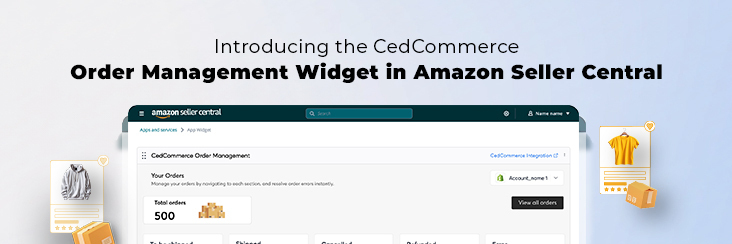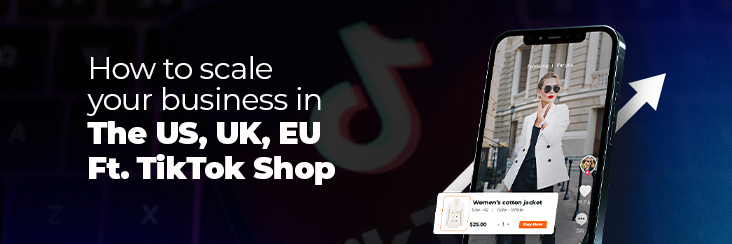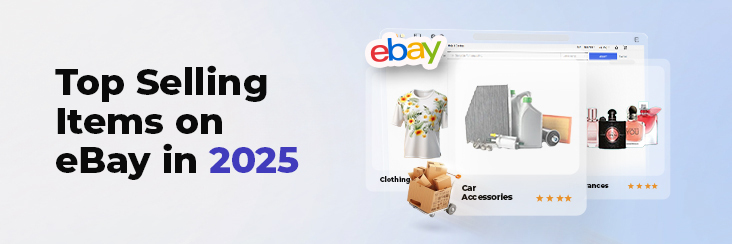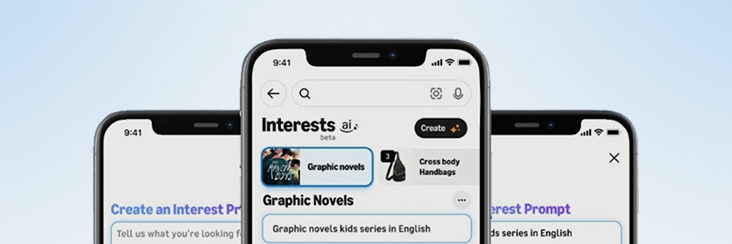Walmart Embraces Amazon MCF: A New Era of Cross-Platform Fulfillment for eCommerce
Walmart Embraces Amazon MCF: A New Era of Cross-Platform Fulfillment for eCommerce
Every merchant wants to explore the possibilities of selling on Facebook Surfaces and bring their Shopify products in front of a larger audience. Sometimes while making the shift of selling your Shopify products on Facebook commerce platforms, merchants come across several difficulties.
And analyzing the problem before leaping to a solution is a critical factor for a successful seller. Therefore, it becomes very important for merchants to analyze the challenges on Facebook before leaping in to find a solution.
In this blog, we will explore the aspects of hurdles that merchants face when selling on Facebook. And some major Facebook Marketplace challenges and its ultimate solution to all these selling problems across Facebook surfaces. Below are all the topics that we are going to talk about.
Facebook Marketplace is one of the most widely used social commerce platforms worldwide. It provides merchants with the opportunity to establish better reach and relationships. But, it is common to experience problems and challenges while selling on Facebook surfaces. These challenges could range from onboarding to account setup.
Here are some of the challenges on Facebook Marketplace that you might encounter and the possible solution through which you can sell hassle-free across Facebook channels.
If you look through a keyhole, Facebook Marketplace and Shops revolve around the same concept of buying and selling. But when you open the door, you will clearly see the difference in their functionality. Let us draw a visible difference between the two:
Facebook Shops is a virtual shop within the Facebook social commerce platform that allows the owners of business pages to use their page as a shop.
Additionally, it allows them to start selling products directly to their customers. And helps in building your brand’s identity.
Facebook Marketplace is a platform where different sellers and buyers can sell and buy products locally. Anyone can view a listing from Marketplace, Newsfeed, Facebook searches, Facebook groups, and Facebook shops.
You can also filter out the products based on location, category, or price. Meanwhile, you can buy a product by sending the seller a direct message or instantly checkout from Facebook Marketplace.
Merchnats often get confused when choosing a Facebook surface that will give them a wider audience base. Although Facebook Shop also provides exposure, Facebook Marketplace is preferable. And it also helps merchants find more buyers without giving any extra cost.
If you are an entrepreneur wanting to surface your products locally or to a wider audience base. In that case, Facebook Marketplace is a preferable option for you as you can find a considerable number of buyers at no extra cost.
While if you are a merchant owning a business and prefer to increase your brand presence, then you can create your Facebook Shop through your business page and sell your products through Facebook Shops and display the same on Facebook Marketplace. You can also display the same products from your Shop across the Facebook channel.
Proactively reach new customers by getting your business across Facebook surfaces & accomplish your business goals. Want to know how? Connect with us now!
Having an offsite page means you have a Facebook Shop that enables a buyer to either “Send seller a message” or “Visit a website.” Through the offsite page, you can simply showcase your products to your potential buyers and redirect them to your website for purchase. With that said, if you want to provide checkout, you can convert your Facebook Page Shop to Facebook Shop.
The checkout option is currently available for US merchants.
From 19th May 2020, a small number of businesses that use Page shops on Facebook were transitioned to Facebook Shops.
You can convert your offsite page into an onsite page by integrating with Facebook Commerce Manager. You can simply connect your existing offsite page with the Commerce Manager and create a new product catalog for you or use the existing one.
While selling on Facebook Marketplace, merchants may encounter problems when it comes to managing orders and inventory across the marketplace or Shops. Let us see some of the Facebook Marketplace issues which arrive during the selling process and their solutions.
Challenge
Sometimes, you can face an issue where your Shopify products are visible on the app, but the same products are unavailable across Facebook surfaces. This type of problem arises when your product is still in the verification phase. Before making a product live, it is verified by Facebook.
Solution
If your product is in any of the verification stages, the notification will appear as “activation in progress” in the Commerce Manager. As soon as you get the approval, your product will be visible on your Facebook Shop.
When you create your products directly across Facebook surfaces without synchronizing your products with Facebook & Instagram Shopping App. Then your order is skipped from the app even after being placed across Facebook surfaces because no prior information about the products is present in the application.
Map your Facebook Marketplace products with Shopify products on which the order has been placed with the help of the app. To map the order:
While setting up your Shop and Commerce Manager, you can come across a “Pending Payment” stage where your payment remains awaiting.
These Facebook marketplace problems arise while registering your shop through Commerce Manager. You have not fulfilled its requirements and haven’t enlisted the essential documents to the Commerce Manager.
To solve the issue with the payment, you need to fill in the following details:
Collaborating with Facebook partners makes it easy for you to start selling across the Facebook channel. With said that, the partner’s solution, like Facebook & Instagram Shopping, makes it effortless for you to manage your business across Facebook surfaces.
You can now benefit yourself with the feature of automatic inventory synchronization. Through this feature, you can automatically create and delete your Shopify products from Marketplace once deleted from the Shopify store.
Facebook offers ample opportunities to you to grow your business across the platform. With that said, if you are a dropshipper, an affiliate marketer, or a seller selling “products on-demand” products, you have to fulfill certain conditions:
You can sell on Facebook Marketplace by establishing your Shop via Facebook or with Facebook Business Partners. Setting up your Shop through partners eases your workload, and you have to manage your products easily across both platforms. When you are selling on Facebook, you are bound to come across several Facebook Marketplace issues.
However, the best way to tackle such challenges on Facebook is to collaborate with a Meta Business Partner that will help you across different stages of selling.
The Facebook & Instagram Shopping App helps you set up your business across the Facebook channel, run ads, and get insights into your products in absolutely no time. Besides, you can leverage checkout on Facebook and sell across Facebook surfaces effortlessly. Also, you can reduce your workload by leveraging the features of central order management, bulk uploading of products, handling errors, and much more.
Facebook is primarily a social media platform. With the introduction of Marketplace, Shops, and Instagram Shopping, it has stepped into the field of eCommerce allowing merchants and brands to develop personalized connections with their clients.
When you start selling across Facebook surfaces, there are certain pointers you should follow to yield better results. Here is a list of tips for selling on Facebook Marketplace.
You can optimize your product listing with Facebook listing partners. Through listing optimization, you can upgrade your Facebook Shop by improving product visibility and click-through rate, and you can generate maximum sales.
To rank your products high across the Facebook channel, it must have the searched keyword and well-structured content. Add the relevant keywords and optimize your product description, alt tags of the products, pages, product images, and product titles.
While selling across the Facebook channel, as a seller, you have to comply with all the Commerce Manager policies. Before shipping, you have to review your customer’s details and orders. Also, see the type of delivery service you are offering.
While setting up your account on Commerce Manager, you need to set your return and payment policy for the products. The return policy of products is set as default for 30 days from the time the order has been delivered. In contrast, you can change this default setting from Commerce Manager for the products and set payout details to run your Facebook Shop.
Note: Mark all your orders shipped within three working days. If not marked shipped within 30 days, the order gets cancelled.
Facebook offers you a variety of tools and services to help you track your shop performance and check your product visibility. You can leverage the features of Facebook analytics, Facebook insight, and Social Media Marketing through Facebook listing partners.
Facebook analytics is a powerful tool that lets you track the user’s interaction on your Facebook Shop and helps you to understand your Shop performance and increase your brand reach. It also provides you with a funnel for your Facebook ads.
Additionally, with the new Facebook Ads feature of the Facebook and Instagram Shopping App, merchants can create and run ads from within the app itself. It also has features that help you to analyze the performance of your ads.
While selling across Facebook surfaces, there are times when you can face some of the challenges on Facebook Marketplace; don’t panic. We have enlisted some issues along with the solution to ease your selling process across the platform.
You can resolve some of these issues listed above by contacting Facebook. However, you can also contact listing partners who will help you with hassle-free selling along with the steps from account set-up to the onboarding process. Thus reducing the chance of any further issues. In case you are stuck somewhere, you can drop down your comments below. Our experts will get in touch with you.

Walmart Embraces Amazon MCF: A New Era of Cross-Platform Fulfillment for eCommerce

Order Management Redefined: A Centralized Solution for Amazon Sellers

Maximizing TikTok Shop’s Regional Compatibility for US, UK, and EU Markets

Understanding U.S. Tariffs in 2025: What Sellers Need to Know and Do

Walmart’s Search Algorithm Decoded: How to Rank Higher & Sell More

TikTok Gets a 75-Day Reprieve in the USA as Trump Signals Hope for a Deal

TikTok Shop Introduces Category-Based Benchmarks for Product Listings – What Sellers Need to Know

Amazon FBA vs. FBM: Which Fulfillment Method Is Right for You?

Amazon Launches Another AI Tool for Sellers: AI Generated Product Enrichment

Top 10 Selling Items on eBay in 2025

Amazon launches AI Powered ‘Interests’ Feature to Improve Shopping Experience

Is TikTok Staying in the US? The State of TikTok Ban

Best Buy coming back to the US, Marketplace Relaunch and New Opportunities in Store!

Miravia PrestaShop Connector: Built for Smart Sellers

Walmart Launches “Wally”, AI Assistant For Merchants

TikTok Shop to Start Business in Germany, France, and Italy

TikTok Shop Surges as Americans Spend $700 Annually, Defying Regulatory Pressures

Amazon’s Longest Prime Day Ever: What You Need to Know

eCommerce Growth in the Netherlands: A 5% Surge in 2024 with Bright Prospects Ahead

CedCommerce Launches Shopee & Lazada Integration for WooCommerce on WordPress.com